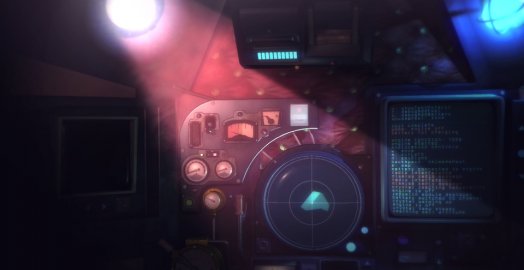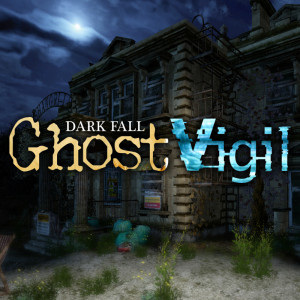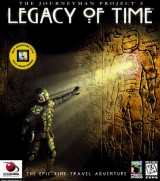Review for Nauticrawl

Occasionally a title comes along that bends a particular set of genres just enough to make the result feel like something almost wholly new. Nauticrawl is an unusual turn-based action-puzzler from indie developer Andrea Interguglielmi that most resembles a roguelike and submarine simulator, but with one crucial difference: you have no idea how to control your vessel, and figuring out how to use it is the puzzle you must solve. It’s a fascinating, if deceptively simple, concept for a game, and even though it’s never quite as challenging as a game like this should be, it is an unforgettable experience.
From the moment you begin, you are handed the proverbial reins to the eponymous submersible-like contraption. There is no tutorial, no manual, (almost) no help at all in understanding the mess of dials, buttons, screens, and switches confronting you. You are largely on your own to figure out how to pilot the craft and how to proceed, and it’s inevitable that eventually you’ll make a critical mistake. The game, in essence, is a large interconnected puzzle, and this aspect of Nauticrawl is done exceedingly well, rewarding both experimentation and patience.
Starting out with a task as basic as turning the power on, you’ll eventually learn to operate the nauticrawl and monitor its computer readouts to keep everything functional. Requirements are varied, including keeping the battery charged and the engine fueled, navigating successfully, and using onboard countermeasures to avoid and/or defend against the various dangers of the deep. This is definitely a game geared to the intrepid personality who ignores the instructions upon bringing a new gadget home, and is both immersive and daunting in equal measure.
For the most part you can’t actually see anything outside, although you can hear sounds through the hull, and juddering reactions of the craft jostle the view accordingly. Situational awareness primarily comes in the form of a sonar system and signal finder, which allow you to identify the terrain and different entities you run across via icons consisting of various shapes and colors. Other than a few moments when I became disoriented or got lost while backtracking to a previous location, navigation is intuitive once you know what you are doing, though like everything else in the game, it will take time to learn.
While investigating Nauticrawl’s oceanic environs, you will need to collect various important materials, such as extra fuel and batteries, along with some items that would be spoilerish to detail. In addition, you will periodically encounter aggressive creatures, defense towers protecting key locations, and derelict nauticrawls with information and supplies ripe for the taking, as well as other mysteries along the way. Often you’ll have to figure out the best way to interact with these entities while at the same time still trying to understand your own vessel’s controls, adding weight to potential errors.
Nauticrawl is billed as a turn-based game, and while this should theoretically make otherwise tense moments such as combat less stressful even for players just starting out, the immersive atmosphere, coupled with an incomplete grasp of the mechanics, conspires to keep the anxiety bubbling. It is also difficult at times to determine exactly what the game considers to be a “turn.” Moving the nauticrawl certainly counts as one, but I was never quite able to determine whether any action of any kind, including interacting with dials and buttons, is also considered a turn, or at least part of one. At times it seemed I hadn’t done anything of consequence, yet the sonar showed that other entities were moving, i.e., taking their turn, while I had remained stationary. In any case, I never quite mastered the turn-based nature of the game, but gained a rudimentary understanding of it such that I could anticipate the movements of other vessels, among other things.
The roguelike nature of the game also keeps you on your toes, no matter how proficient you become with the mechanics. While the autosave function allows you to exit mid-game and return right where you left off, every action taken is irreversible, and death necessitates starting over. Initially the trial-and-error mechanics appear overwhelming, made all the more stressful by the fact that consequences are permanent. Especially early on, mistakes I made were costly. Whether due to the wrong button being pressed, being unable to fend off an attacking enemy, or running out of fuel with no replacement on board, deaths were fairly common for a while as I tried to master (or at least get past) the action I had failed to accomplish before.
Yet the sense of being out of one’s depth will fade over time, for both good and ill. Yes, you will likely die quite a few times in this game. When you discover that you have gotten yourself into an unresolvable situation and must start over, sometimes you may even choose to self-destruct via a switch that is, thankfully, fail-safed against accidental activation by a glass cover, rather than follow through with your actions that will lead to inevitable demise anyway. However, even at its most frustrating, Nauticrawl never feels particularly difficult, and I honestly don’t know whether that is a good thing or not.
On the one hand, discarding the sometimes-punishing difficulty of the roguelike genre was a great decision, one that allowed my time with the game to be much more focused on learning the systems and tackling the various challenges presented through experimentation and curiosity, rather than being frustrated by insurmountable obstacles. And there is a certain delicious glee to be had when you use knowledge gained from successive failures to solve a problem. The combat and evasion mechanics are quite thrilling, especially early on when events are less predictable. On the other hand, I can’t get past the feeling that Nauticrawl's gameplay could – indeed should – have been even more compelling than it is. Surprises found throughout the adventure, especially regarding the nature of the nauticrawls themselves, keep things interesting up to the end, but these revelations, and the subsequent changes in the mechanics, aren’t necessarily accompanied by increased challenge.
Instead, the game seems to get easier over time, even as it presents new and unique situations. It was almost as though I had learned enough about the machine to make educated guesses about what would work and what wouldn’t, the effect of which was to reach the end in a little over four hours the first time I played through it. Not a particularly short game, but considering that a good portion of my early time was spent starting over, it didn’t feel particularly lengthy, either. In fact, I said, “Wait, that’s it?” when the credits started rolling just as things had become quite intriguing. My feelings of mild dissatisfaction, however, don’t reflect my attitude while actually playing the game, which is a very fun and unusual experience. Only upon reflection are the shortcomings apparent, and a degree of disappointment sets in at what might have been.
The story, too, is more evocative than expositional, and rather sparse overall. Throughout the game, just enough information is sprinkled around to fill in gaps that advance the plot and do some world-building. Oftentimes these bits of color contain hints for operating the nauticrawl or pointers to your next goal, a clever way of providing assistance while maintaining the game’s narrative integrity and immersion. While these snippets are delivered in various ways, most come via two primary sources. One is your radio, through which you can receive text-based messages from the outside world. The other is by retrieving messages when, for instance, searching a wrecked nauticrawl. Accessing these messages open up entries in the craft’s computer that provide you with more information about entities you have encountered or aspects of the society you come from.
Given the roguelike genre’s propensity for randomly generated levels, I was expecting some amount of replay value. It is worth noting that, if you want to find all of the messages in order to glean every narrative detail from the game, you may in fact have to play more than once, an option that is appreciated. But I was somewhat disappointed that, aside from the environments themselves, the story itself appears to unfold the same way each time. For example, at a particular point you have the opportunity to travel to a new environment, and you have a choice of several places to go. However, it didn’t seem to matter where I chose to go; for me, the story played out exactly the same way no matter what.
It may have been that I got lucky and happened to stumble on the correct location each time. However, there are other times in the game, which I will not spoil here, when you appear to have a choice that would matter, but in fact the choice is illusory, which I discovered upon making a different decision after dying and starting over, just to see what would happen. Ultimately this is a minor quibble, but once you notice it, the illusion of choice tends to break the immersion somewhat.
Nauticrawl is primarily a mouse-driven affair, although the keyboard can be used for certain functions. In general, the controls are intuitive regardless of your chosen setup, though I noticed that the keyboard is more natural for, say, moving the nauticrawl rather than activating the correct lever over-and-over again with the mouse. Zooming with the mousewheel allows you to get a closer look at the vessel’s controls, which is helpful for seeing text displayed on the monitors more clearly and for making selections more precisely.
On the graphics front, limiting the view to what you can see from the cockpit doesn’t mean you have to suffer bland visuals, and Nauticrawl is a surprisingly beautiful game. While at first glance the interface seems quite utilitarian, activating ever more features reveals a variety of colors, lights, and clever details. Gauges and computer screens glow a chilly blue, while buttons feature a range of eye-catching hues. The empty cocktail glass on the dashboard, complete with an umbrella and flamingo charm, even rattles in response to the nauticrawl’s movements. Overall, I was impressed by just how detailed the interface is, and how engaging those details make the experience.
Sound effects are likewise immersive, and there is almost always something to hear, whether originating from within or outside. The engine roars, computers chime, alarms and warnings fill the cockpit with incessant buzzing, and impacts to the hull are at times startlingly loud. Combined with the realistic visuals, Nauticrawl features one of the most authentic-feeling environments I’ve experienced in quite some time.
A few sparse musical tracks are present as well. While not as overwhelmingly impressive as the ambient sounds, their purpose is not to be omnipresent but rather to punctuate occasional moments with an emotional flourish. The sentiment that less is more applies in this case, enhancing the experience without calling attention to itself.
When I first caught wind of Nauticrawl, I was intrigued by its sheer uniqueness. A genre-bending mix of roguelike, simulator, and puzzle game, from the start it manages to create a level of simmering tension that encourages experimentation as you try to master the controls. Permadeath mechanics and not-so-friendly confrontations increase the tension, and can seem overwhelming, especially early on, when you are still mastering the mechanics. However, while the gameplay evolves over time to keep things interesting, once you understand how things work the challenge does peter out somewhat, and the way the turn-based mechanics work could have been clearer. Story-wise things are sparse, but serve to provide enough context and interesting narrative tidbits that hint at the larger world outside your cockpit. Ultimately, Nauticrawl is such an unusual title, and for the most part works so well, that I would encourage anyone with even a vague interest in the concept to try it out. Although the wonderful sense of discovery and delight at having no idea what is in store can only happen once, that first playthrough is a journey to remember.
Our Verdict:
The genre-bending Nauticrawl successfully turns intentionally confusing submarine controls into an immersive journey of discovery where understanding leads to incremental progression and exploration is key to your survival. It’s by no means perfect, and feels like it could have been more, but it’s nevertheless an unforgettable experience.






























